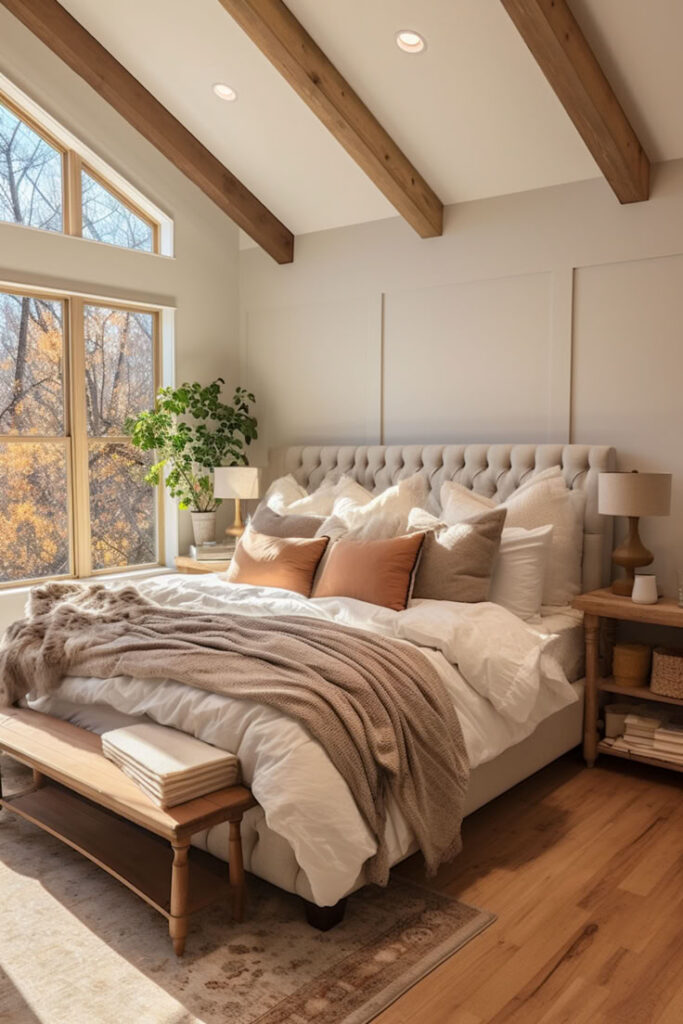Creating a comfortable and aesthetically pleasing living space is essential for enhancing your daily life. Living spaces are not just about functionality; they reflect your personal style and create an environment where you can truly relax and thrive. From choosing the right furniture to incorporating decorative elements, every decision plays a significant role in your home’s overall ambiance.
With a variety of options available—from contemporary designs to classic styles—you can easily find pieces that resonate with your taste. Retailers like Living Spaces offer a diverse selection, ensuring you can curate a room that meets both your practical needs and aesthetic desires. By understanding how to effectively utilize your living space, you can transform it into a haven that complements your lifestyle.
Exploring different furniture styles and arrangements will allow you to maximize both comfort and visual appeal. Investing time in crafting your ideal living space will not only enhance your home but also uplift your day-to-day experiences, making your environment a true reflection of you.


Defining Living Spaces
Living spaces refer to the areas within a home designated for daily activities and comfort. These include:
- Living Rooms: Spaces for relaxation and entertainment.
- Bedrooms: Private areas for rest and sleep.
- Kitchens: Functional areas for cooking and dining.
- Bathrooms: Essential rooms for personal hygiene.
In architectural terms, living spaces encompass all rooms that contribute to your lifestyle.
You may find that the layout and design of your living spaces significantly impact your well-being. For instance, an open floor plan can enhance social interaction, while designated rooms provide privacy.
When considering your living space, think about how each area serves your needs.
Factors to consider include:
- Functionality: Does the space meet your everyday requirements?
- Aesthetics: Are the design and decor appealing to you?
- Comfort: Is the environment conducive to relaxation?
Creating the ideal living space involves balancing these elements. This approach ensures that your home is not only functional but also a reflection of your personal style and preferences.



Historical Evolution of Living Spaces
Living spaces have evolved significantly over centuries. Initially, homes served basic survival needs, providing shelter from the elements. These early structures were simple and functional.
As societies progressed, the concept of living spaces expanded. The rise of individuality in design became apparent. In the 20th century, influences such as the Arts and Crafts movement emphasized craftsmanship and personal expression.
From the 1930s onward, the American living room emerged as a focal point. This space transformed into a place for social interactions and entertainment, reflecting cultural shifts.
The post-World War II era marked another significant change. The suburbanization trend introduced open floor plans, merging indoor and outdoor spaces. This design aimed to enhance lifestyle and promote leisure.
Communal living also witnessed a revival. Shared spaces became popular, emphasizing community support and resource sharing. Modern co-living arrangements reflect this trend, catering to urban populations seeking affordable housing.
Key elements to consider in the evolution of living spaces include:
- Functionality: Early homes focused on survival, while modern spaces cater to diverse needs.
- Design Trends: Shifts in style influenced how living spaces are perceived and utilized.
- Community: The move towards communal living highlights the importance of social connections in residential design.
Today, living spaces continue to develop, influenced by technology and changing societal norms.


Fundamentals of Living Room Design
Creating a well-designed living room requires careful consideration of several elements. Focus on space planning, design styles, and color schemes to develop a cohesive and inviting environment that reflects your personal taste.
Space Planning
Effective space planning is crucial in a living room. Start by measuring the dimensions of your space to determine how to arrange furniture and other elements.
- Define Areas: Identify specific zones such as seating, entertainment, and activity areas. This helps maximize functionality.
- Traffic Flow: Ensure that there is ample space for movement. Aim for at least 24-30 inches of pathway for comfort.
- Scale and Proportion: Choose furniture that complements the size of the room. Large pieces in small rooms can overwhelm, while tiny items in big spaces can look lost.
Design Styles
Selecting a design style helps in creating a cohesive look. Here are some popular styles to consider:
- Modern: Focus on clean lines and minimalistic decor. Use neutral palettes with bold accents.
- Traditional: Incorporate elements like rich fabrics and classic furniture. Warm colors and ornate details are key.
- Eclectic: Combine diverse elements for a unique look. Mix patterns, colors, and decor types to express individuality.
Blend different styles judiciously to maintain harmony in your living space.
Color Schemes
Color plays a significant role in setting the mood of your living room. Consider the following tips to choose the right palette:
- Neutral Base: Start with a neutral foundation—beige, gray, or white are good choices. This allows flexibility in decor.
- Accent Colors: Select 1-2 accent colors to create focal points. Use them in cushions, artwork, or accessories.
- Consider Lighting: Natural and artificial light can drastically impact color perception. Test paint samples on your walls before making a final decision.
By thoughtfully considering these elements, you can create a living space that is both functional and aesthetically pleasing.


Selecting the Right Furniture
Choosing the right furniture for your living space can significantly influence both the functionality and aesthetics of your home. Focused decisions regarding key pieces will enhance your overall environment and cater to your lifestyle needs.
- 7shares
- Facebook0
- Pinterest7
- Twitter0



